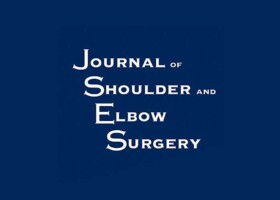
Authors:
Vopat ML, Hanson JA, Horan MP, Fossum BW, Dey Hazra RO, Peebles AM, Provencher MT, Millett PJ
Abstract:
Background:
Patients with a history of anterior shoulder instability (ASI) commonly progress to glenohumeral arthritis or even dislocation arthropathy and often require total shoulder arthroplasty (TSA). The purposes of this study were to (1) report patient-reported outcomes (PROs) after TSA in patients with a history of ASI, (2) compare TSA outcomes of patients whose ASI was managed operatively vs. nonoperatively, and (3) report PROs of TSA in patients who previously underwent arthroscopic vs. open ASI management.
Methods:
Patients were included if they had a history of ASI and had undergone TSA ≥5 years earlier, performed by a single surgeon, between October 2005 and January 2017. The exclusion criteria included prior rotator cuff repair, hemiarthroplasty, or glenohumeral joint infection before the index TSA procedure. Patients were separated into 2 groups: those whose ASI was previously operatively managed and those whose ASI was treated nonoperatively. This was a retrospective review of prospective collected data. Data collected was demographic, surgical and subjective. The PROs used were the American Shoulder and Elbow Surgeons score, Single Assessment Numerical Evaluation score, QuickDASH (Quick Disabilities of the Arm, Shoulder and Hand) score, and 12-item Short Form physical component score. Failure was defined as revision TSA surgery, conversion to reverse TSA, or prosthetic joint infection. Kaplan-Meier survivorship analysis was performed.
Results:
This study included 36 patients (27 men and 9 women) with a mean age of 56.4 years (range, 18.8-72.2 years). Patients in the operative ASI group were younger than those in the nonoperative ASI group (50.6 years vs. 64.0 years, P < .001). Operative ASI patients underwent 10 open and 11 arthroscopic anterior stabilization surgical procedures prior to TSA (mean, 2 procedures; range, 1-4 procedures). TSA failure occurred in 6 of 21 patients with operative ASI (28.6%), whereas no failures occurred in the nonoperative ASI group (P = .03). Follow-up was obtained in 28 of 30 eligible patients (93%) at an average of 7.45 years (range, 5.0-13.6 years). In the collective cohort, the American Shoulder and Elbow Surgeons score, Single Assessment Numerical Evaluation score, QuickDASH (Quick Disabilities of the Arm, Shoulder and Hand) score, and 12-item Short Form physical component score significantly improved, with no differences in the postoperative PROs between the 2 groups. We found no significant differences when comparing PROs between prior open and prior arthroscopic ASI procedures or when comparing the number of prior ASI procedures. Kaplan-Meier analysis demonstrated a 79% 5-year survivorship rate in patients with prior ASI surgery and a 100% survivorship rate in nonoperatively managed ASI patients (P = .030).
Conclusion:
At mid-term follow-up, patients with a history of ASI undergoing TSA can expect continued improvement in function compared with preoperative values. However, TSA survivorship is decreased in patients with a history of ASI surgery compared with those without prior surgery.
You may request the complete study: Total Shoulder Arthroplasty Outcomes in Patient with Prior Anterior Shoulder Instability: Minimum 5-year Follow-up
